Life
April 2025

Bishop Greg’s Easter message
Port Macquarie’s Carol Briscoe reflects on a life of giving
Fr Peter Slack on the great week of Easter

April 2025

Bishop Greg’s Easter message
Port Macquarie’s Carol Briscoe reflects on a life of giving
Fr Peter Slack on the great week of Easter
Deacon Shane Hyland is ordained and we welcome new students to schools across the Diocese


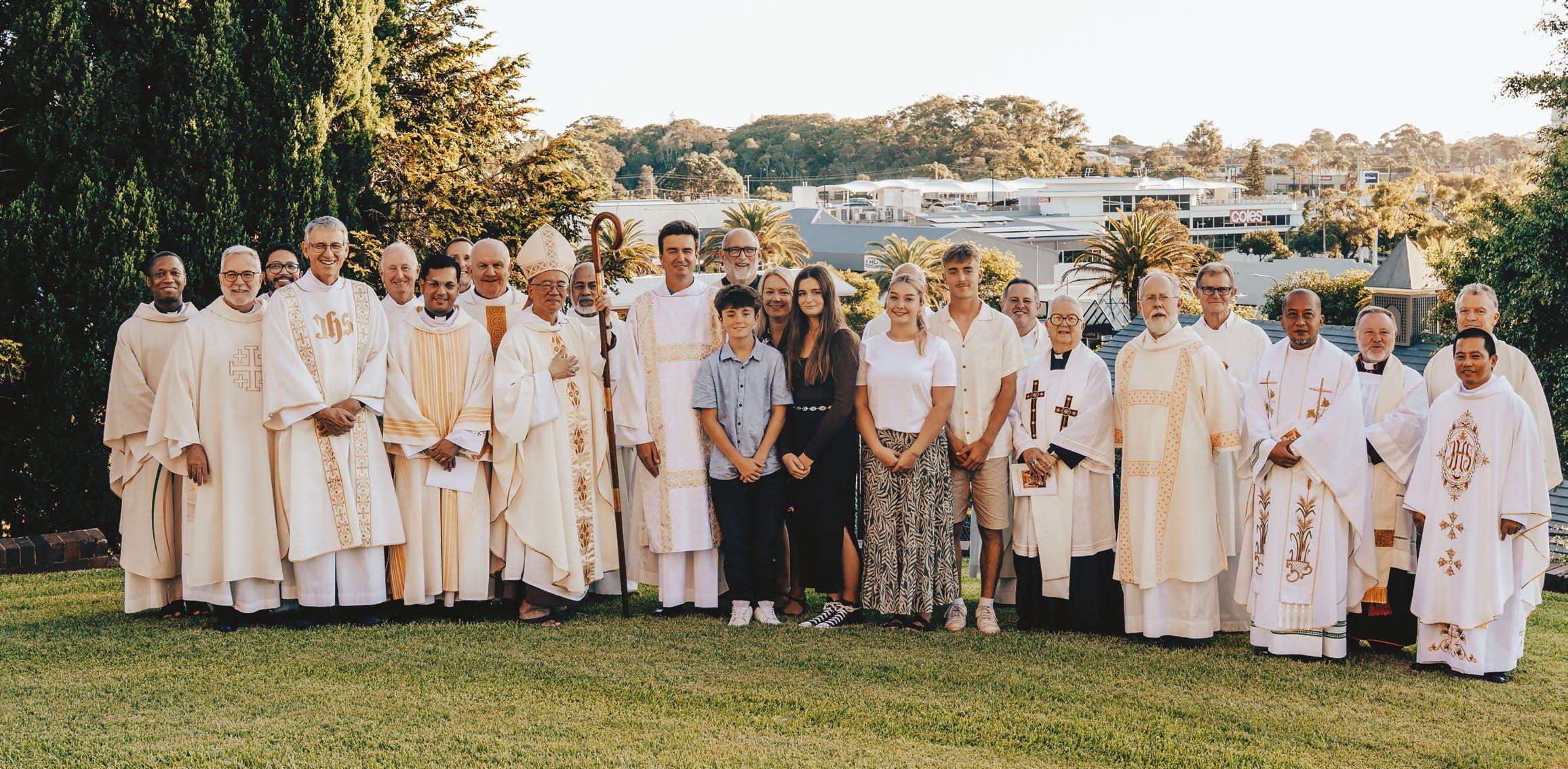
On Sunday 23rd February 2025, Shane Hyland was ordained as a Permanent Deacon at St Agnes’ Catholic Church, Port Macquarie. A devoted husband and a father of three, Shane serves as the Leader of Evangelisation at St Joseph’s Regional College. As he embarks on this sacred
ministry, we keep Shane and his family in our prayers, asking for God’s blessings on their journey within the Church. We will have more on Deacon Shane’s ordination in the next issue of Catholic Life
Photos by Daniel Pereira

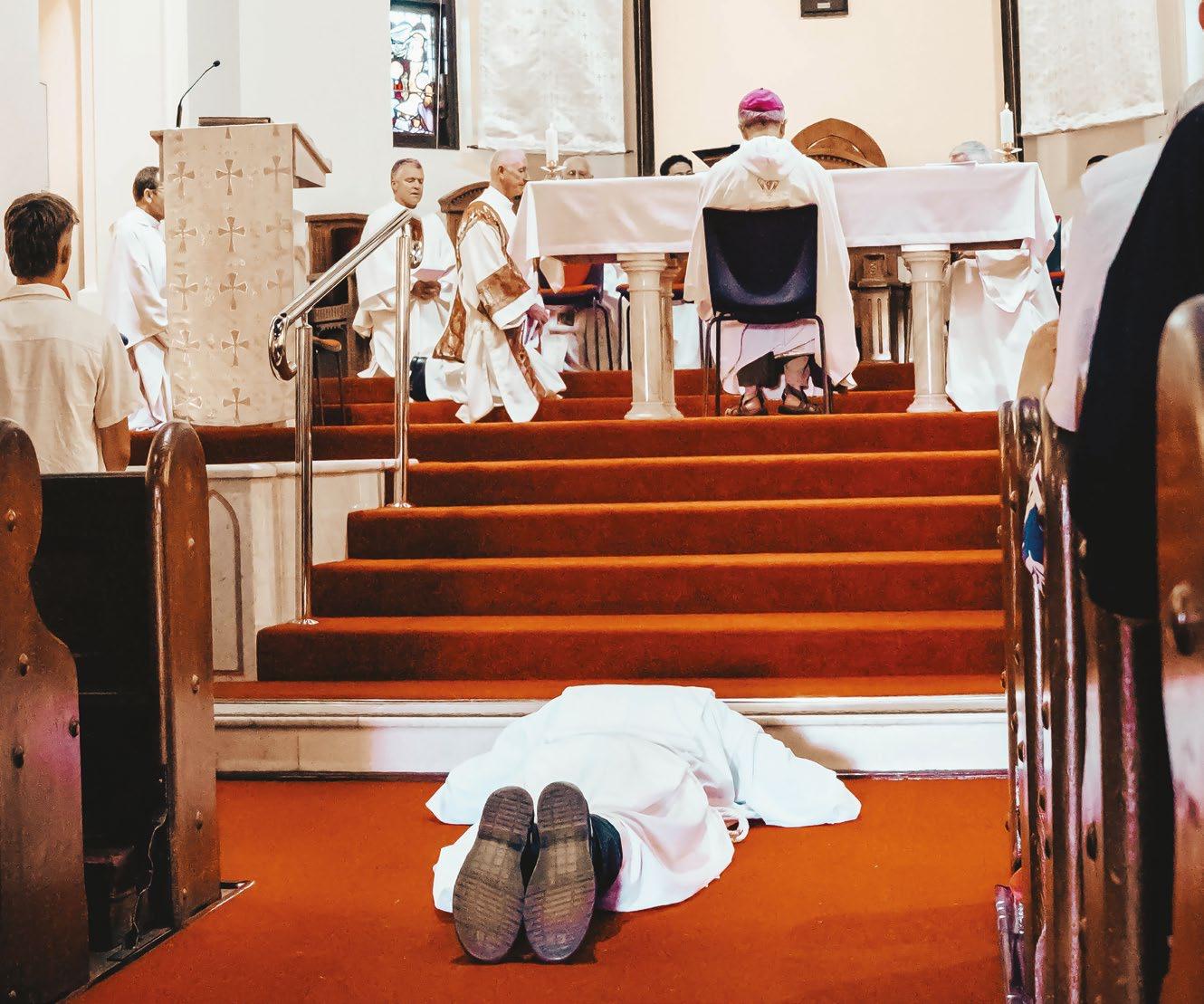

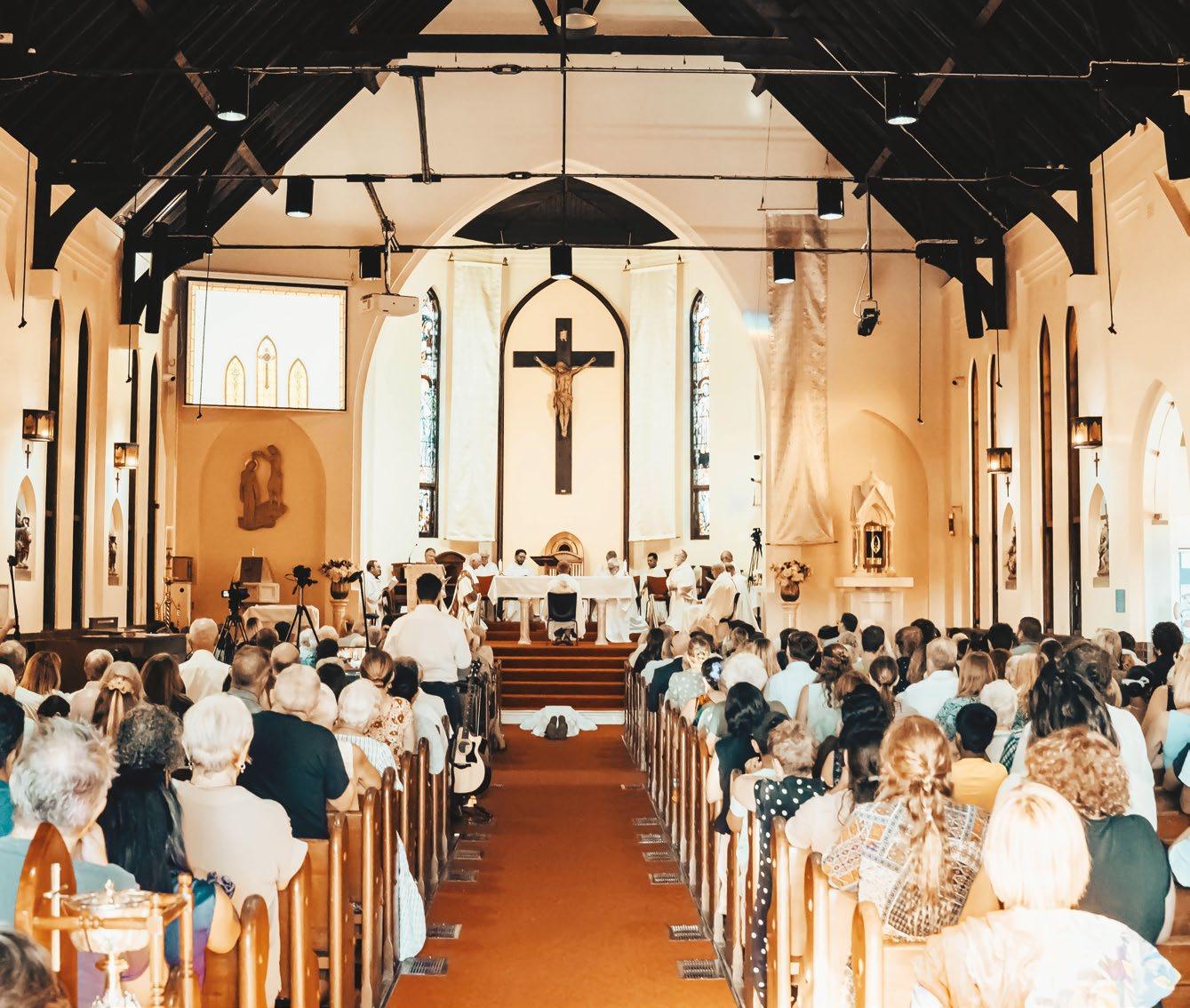
We welcome submissions of articles and high-quality photographs to be sent to the editor at:
media@lismore.catholic.org.au
While we strive to publish submissions, please note that this cannot always be guaranteed, and content may be edited for space and clarity.
Published by Diocese of Lismore Visit
Editor: Barry de Silva
Editorial committee: Joe Pereira, Margaret Haydon, Fr Peter Wood, Greg Isaac, Barry de Silva.
© 2025 The Diocese of Lismore
No part of the magazine may be reproduced in any form without prior written consent from the Bishop of Lismore. All the content and photographs that appear are used for the purpose of the magazine, with the prior permission of those concerned.
Front cover: Deacon Shane Hyland with his wife, Leanne.
Photo by Daniel Pereira
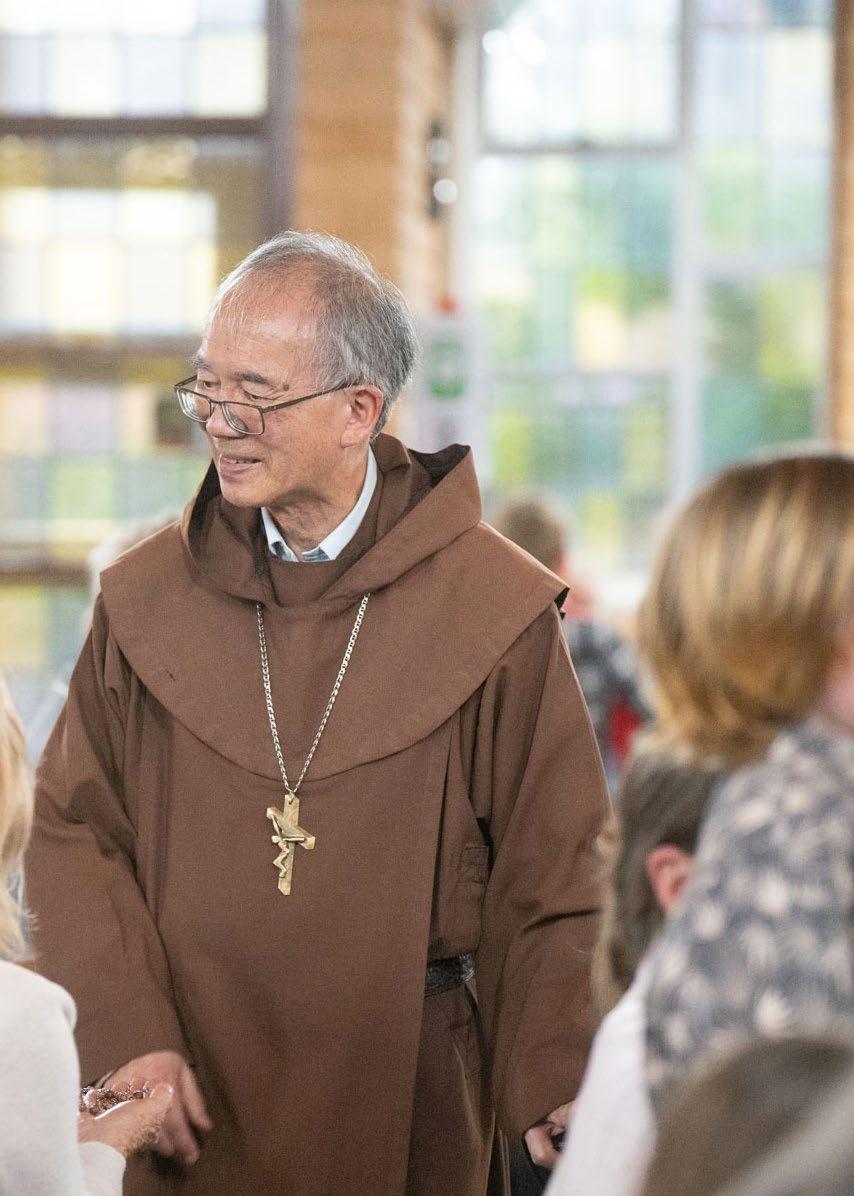



Easter reminds us that in spite of darkness and seeming impossibility, God is greater and can bring out much good from human despair and negative experience.
This year as we approach the great Feast of Easter we cannot ignore natural disasters and worrying international problems. Lismore Diocese had floods and heavy winds courtesy of Cyclone Alfred, but luckily survived. Despite our prayers, peace is not a reality in our world, and the international economic order is being undermined. Poverty and displacement are everywhere.
Today I read the section of Genesis in which Joseph is sold into slavery by his
brothers. This horrible offence against family and love proves to be the salvation of the sons of Jacob who find safety and food in Egypt. From this, Moses emerges as the leader of Israel who, after the Passover, takes the Jewish people to the frontier of Israel.
Easter reminds us that in spite of darkness and seeming impossibility, God is greater and can bring out much good from human despair and negative experience. The Resurrection crowns the despondency following the death of Jesus.
We are Easter people who daily look for experiences of resurrection. If we look beyond ourselves to the abundant goodness which surrounds us, we shall see the Risen Christ.
With my prayers and Easter wishes, Bishop Greg Homeming OCD
Bishop Greg’s Lenten Talks are a great way of preparing for the highest celebration of our Christian faith at Easter. The three talks for 2025 have been anticipated all around the world and are available for you to watch.
Scan to watch the Lenten Talks or visit: youtube.com/ LismoreDioceseAU

Our YouTube channel also streams Bishop Greg’s Sunday Mass, Australia’s most popular online mass.

by Fr Peter Slack
Beginning on Palm Sunday and finding its highpoint in the Easter Vigil and Mass of the Resurrection, Holy Week stands out as the most important week in the Church’s calendar.
Over 1,600 years ago, Egeria, an early Christian pilgrim, kept a diary of her journey to Jerusalem at this time. She called this week, the Great Week
Like Egeria, our journey begins on Palm Sunday. Holding palms, we walk into the church accompanying Jesus as he entered Jerusalem, the city of his passion. There is a feeling of expectation and exaltation. Like those who entered Jerusalem with him, we acclaim him as King. Soon the mood will change as we listen to the story of his passion. The storm clouds of his suffering lie ominously on the horizon.
Thursday marks the beginning of the Sacred Triduum, a term derived from Latin, meaning ‘three days’. Holy Thursday, Good
Friday, and the Easter Vigil form one continuous liturgical celebration—three parts of one dramatic prayer.
On Holy Thursday, we gather in the evening for the Mass of the Lord’s Supper. We hear the Gospel account of Jesus and his disciples in the upper room, our feet are washed by the priest in fulfilment of the command of Jesus to love one another. This ancient practise of the washing of the feet gives its name to this day, Maundy Thursday, from the Latin word mandatum which means ‘command’.
The Mass concludes with a procession of the Blessed Eucharist to the Altar of Repose, for communion on Good Friday. Afterwards, the altar is then stripped and crosses are removed or covered. Without adornment, the church seems empty.
Earlier on Holy Thursday, or earlier in the week, priests and the faithful gather in the Cathedral for the annual Chrism Mass. During this liturgy, the Bishop blesses the sacred oils used throughout the year for Baptism, Confirmation, and Holy Orders.
There is a stark simplicity about Good Friday. We gather at 3pm for the solemn celebration of the Lord’s Passion. The Eucharist is not celebrated on this day, with the exception of the Sacraments of Penance and Anointing of the Sick, no other sacraments are administered.
We gather to listen to the story of Jesus’ suffering, venerate the cross, and receive Holy Communion. Like Egeria, we kiss the wood of the cross, remembering Christ who died for us.
Holy Saturday is a day of quiet reflection. The Church enters into a period of waiting, preparing for the Great Vigil of Easter—the most ancient and solemn liturgy of the Christian calendar, dating back at least to the mid-second century.
That evening, we gather outside as a fire is kindled. The Paschal Candle—marked with the Alpha and Omega, the current year, and five grains of incense representing Christ’s wounds—is carried into the darkened church. As we hold our own candles, the flame spreads, and in the flickering light, we hear the Easter Proclamation: Jesus Christ, our Lord, is risen from the dead!
Together we hear the stories of our salvation, are blessed with the waters of baptism, and leave with the threefold Alleluia resounding in our hearts.
Here concludes the Great Week. On Easter Sunday, we celebrate the Mass of the Resurrection, ushering in the fifty-day season of Easter, culminating in the Feast of Pentecost.

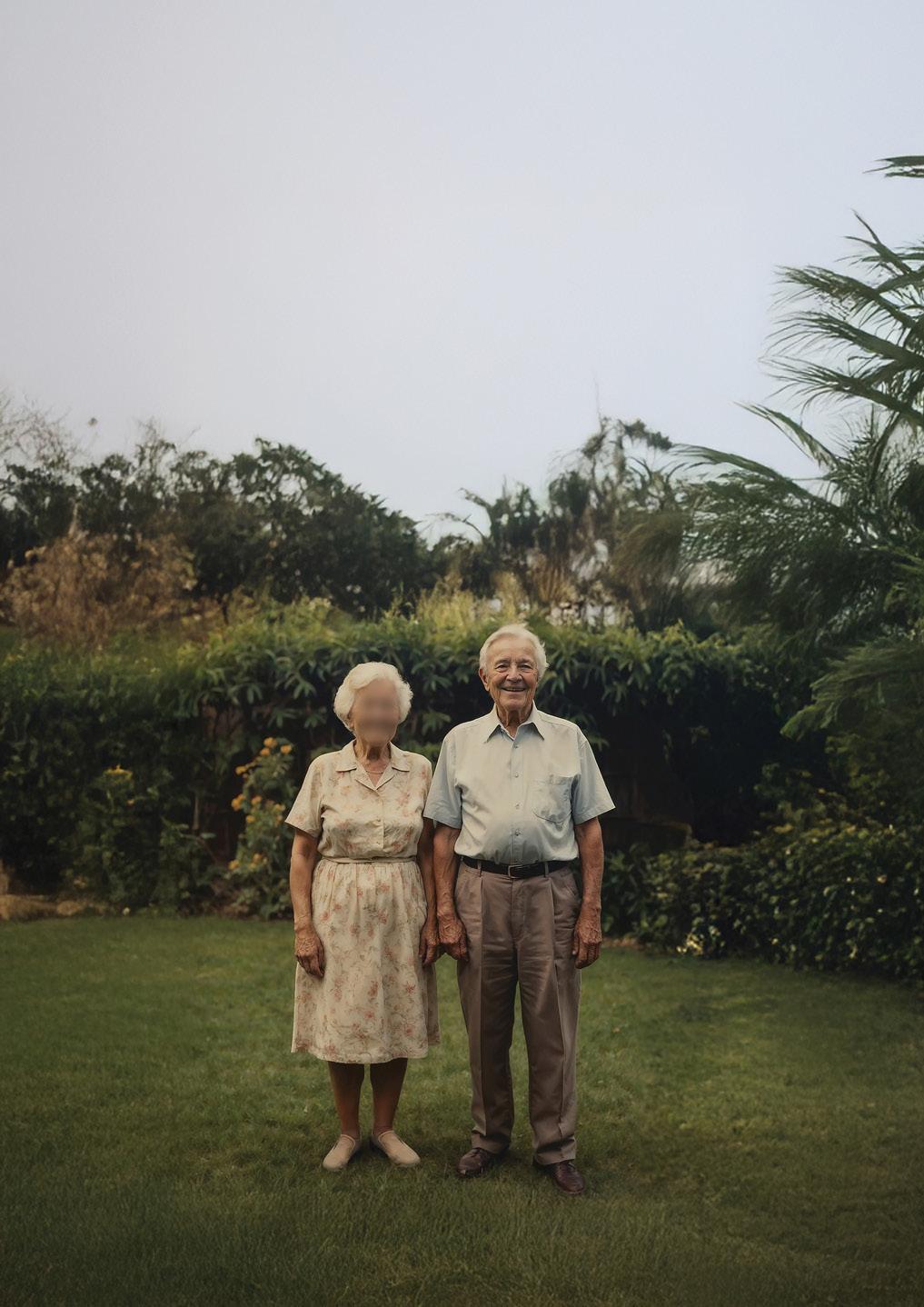


T H E N O R T H E R N R I V E R S ’ H I D D E N G E M C


Where business meets comfort. Nestled in nature yet close to town, Invercauld House offers modern amenities in a serene setting. Find your ideal venue for conferences, events, and accommodation in the beautiful Northern Rivers. Experience award-winning customer service and exclusive not-for-profit rates


For those who regularly watch the Diocese of Lismore’s weekly online Mass, Deacon Graeme Davis is a familiar face, assisting Bishop Greg Homeming with the service at St Mary’s Chapel. Away from the weekly mass, Graeme’s life is synonymous with a dedication to service that spans from battlefields to hospital rooms and the general public.
Graeme’s life of service began in 1963 when he enlisted in the Australian Regular Army, embarking on a military career that would span almost 40 years. As a company medic in the Vietnam War, (1963-1975) Graeme was part of the operational field combat medical support party during the Battle of Long Tan.
“We were principally the first responders,” he recalls, reflecting on the critical role he played in providing medical support under dire circumstances and enemy fire.
When the Vietnam War ended in 1975, Graeme witnessed the mass exodus from the Australian Army and transitioned to a part-time role within the Army Reserve, having been wounded in action during his deployment. He soon took up a civilian position with the Lismore City Council, where he managed
council public property and Crown land parks and reserves.
In 2000, a calling led him to study Theology at the Australian Catholic University, setting him on the path towards Holy Orders and his ordination as a Permanent Deacon. This change provided opportunities in ministry and chaplaincy roles that have allowed him to extend his compassion and care into new settings.
“During my formation and study in Brisbane, I volunteered for the Rescue Helicopter Service, Royal Brisbane and Women’s Hospital, Gold Coast General Hospital in Southport and later St Vincent’s Hospital in Lismore – completing a degree in Theology and Certificate IV in Clinical Pastoral Education,” Graeme says.
Following his ordination in 2007, Graeme became a volunteer pastoral care practitioner for a range of organisations, that act as first responders in varying contexts.
“As a trauma officer and pastoral practitioner, I find that work most rewarding. I am still actively involved with NSW Surf Life Saving, Northern Rivers Rescue Helicopter Service, NSW Ambulance Service, NSW Fire and Rescue Service and most ex-service groupings. They all seem to dovetail, because if there’s an incident, one or more of the agencies will be involved in some way,” he explained.
For the past 22 years, Graeme has served as a non-stipend hospital chaplain at St Vincent’s and Lismore Base Hospitals, providing
emotional and spiritual support to patients and families. He often finds himself serving as an advocate for families, assisting with communication between them and medical practitioners and various other allied medical support services.
“Sometimes the next of kin would ask me if I can help organise for the doctor to speak to them. Often, they are too embarrassed to ask themselves, so I’ve been that envoy for them many times.”
Graeme’s dedication to his vocation in diaconate ministry within the Diocese is unwavering, extending well beyond typical business hours. “Being able to minister to people is a privilege,” he says. “But it doesn’t always happen 9-5. It takes place at all hours, day and night, even on Christmas Day or Boxing Day.”
His calling also extends to supporting first responders who experience trauma and frustration on the job. Graeme recalls a recent incident involving a young police officer who had been traumatised by a harrowing accident he had witnessed within the Lismore LGA.
“The young police officer was on traffic control duty, comparatively new in the job and city, was on his own and in the dark for hours without any support, food or water. I was able to get him something to eat and drink, and I stayed with him [for mutual support] for several hours - what I offered was in essence psychological first aid, which is just part of the pastoral ministry.”
In addition to his pastoral work, Graeme serves as the Diocesan Director for Caritas Australia, the overseas aid and development agency of the Catholic Church. Through his efforts, he supports on behalf of the Bishop, Caritas’ mission and response to emergencies that deliver critical aid globally.
In 2023-24, Caritas reached over 1.5 million people through emergency appeals, helping vulnerable communities in places like Samoa, Vietnam, and Congo. Caritas’ major campaign, Project Compassion, invites parishes and schools to contribute to aid programs during Lent.
“It’s a chance to support those who are most vulnerable in different parts of the world,” Graeme explains.
Through his many roles, Graeme exemplifies a life of selfless service, humility, and faith. Whether he is offering comfort to patients and families, supporting first responders, or advocating on behalf of Caritas, he embodies the Church’s mission of compassionate service to others.
Let us not love with words or speech but with actions and in truth.
1 John 3:18

fundraise.projectcompassion.org.au 1800 024 413 #projectcompassion

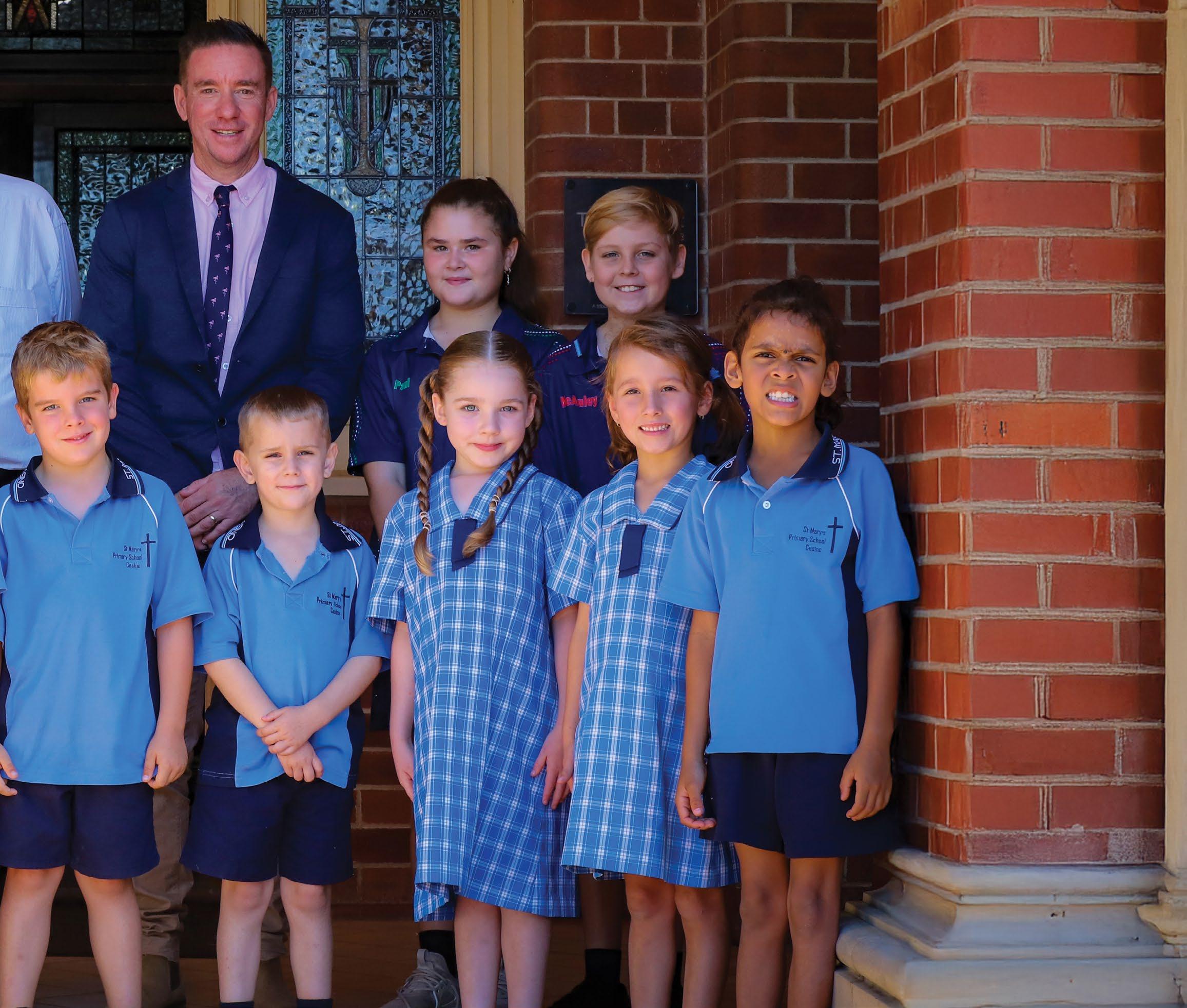
leaders, they embarked on a year of academic achievement, personal growth, and preparation for life beyond school. We eagerly anticipated the growth and success that awaited our students, families, and staff in the year ahead.
While students across the Diocese embraced new beginnings, the St Mary’s Primary School, Casino, community took a moment to honour Principal John O’Brien, celebrating his 10 years of transformative leadership with a heartfelt surprise event.
John experienced an emotional and unforgettable

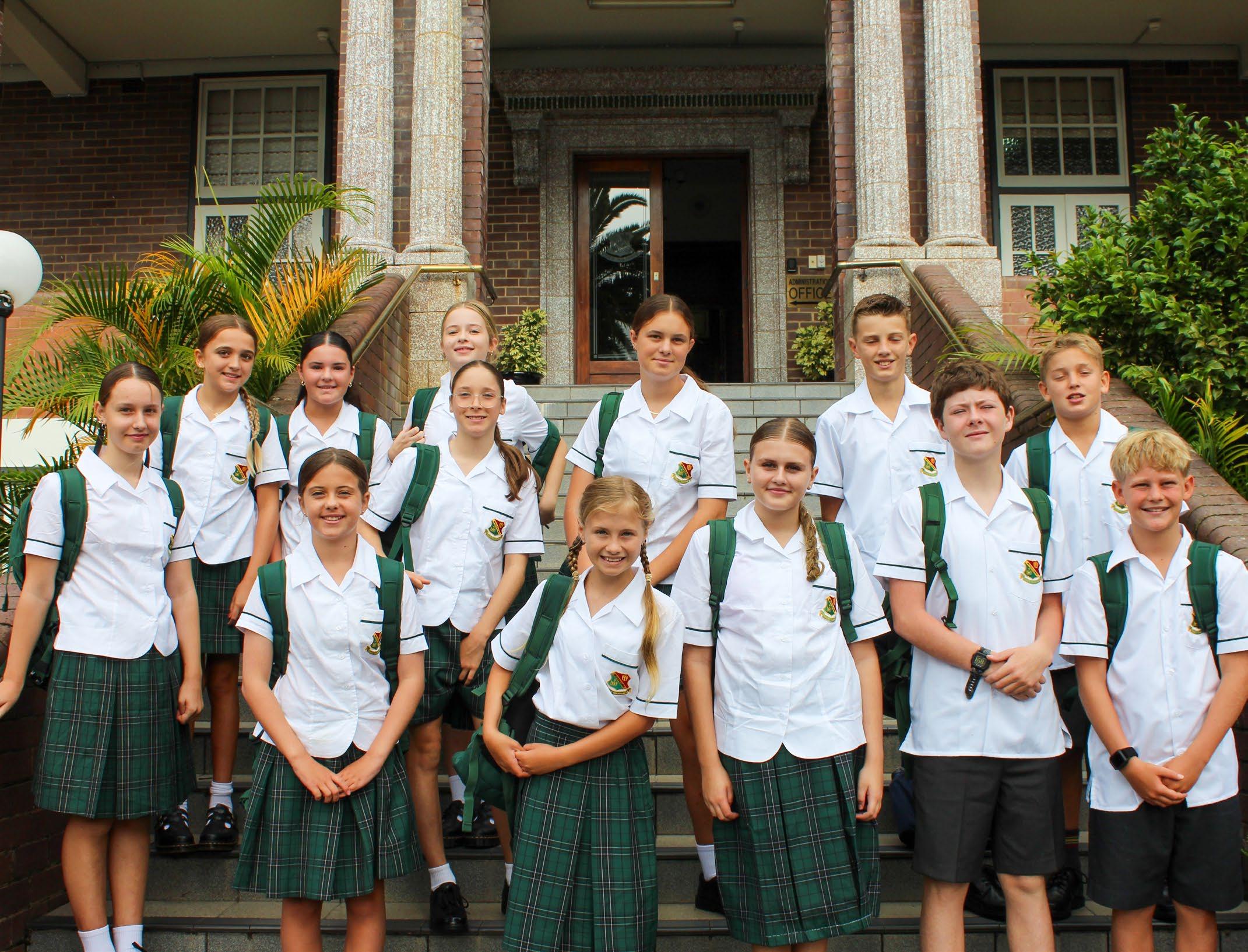
moment when he arrived at school to find over 607 students, with staff and families dressed just like him for a special ‘Dress Like Mr O’Brien’ day. The school community came together in a lighthearted but deeply meaningful tribute, reflecting the fun, connection, and joy he fostered over the past decade.
“I had no idea something was happening,” John shared. “When I arrived, I saw a student dressed like me and thought, ‘You look like me,’ but didn’t think much of it. Later, as I walked to the assembly, I was overwhelmed to see everyone there—staff, students, and families—all dressed up, with my sayings, my favourite songs. It was so personal and meaningful.”
Beyond the fun, the event was a powerful testament to John’s lasting impact on the school. Students spoke fondly of the cattle truck playground, a feature he had envisioned and brought to life. “He knew us Casino kids—he knew we loved sport, farming, and digging in the sand. He made playgrounds just for us because he wanted us to love coming to school,” one student shared.
Staff echoed the deep appreciation for John’s leadership and vision, with one remarking, “John believed in his team, encouraged innovation, and walked the journey with us.”
As new students began their school journeys and inspirational leaders like John continued to shape their communities, the Diocese
of Lismore Catholic Schools remained committed to fostering a culture of learning, faith, and connection.
From the first steps in kindergarten to the final milestones in Year 12, and from fresh faces to experienced leaders, this year celebrated growth, transformation, and the power of community.
We enjoyed these special moments captured across our schools, celebrating new beginnings and the incredible impact of outstanding leadership.
Scan to read more stories from our Catholic schools





wonderful people along the way. There are so many charitable organisations that need volunteers – it is a way to give, to build community, and to forge strong relationships,” Carol says.
She speaks simply about the roles she has taken on in the Port Macquarie Parish and in the Diocese of Lismore, as if they are unremarkable – just par for the course God has asked her to walk.
When Carol and her husband Peter arrived in Port Macquarie in 1976 St Agnes’ Catholic Parish was small
Some of the few things Carol said ‘yes’ to over the years include:
• Chairing the St Agnes’ Catholic Parish Finance Council for 13 years and a member for 35 years;
• Chairing the St Agnes’ Education Council for 20 years
• Chairing the Diocesan Education Board, which oversees 45 schools and 20,000 students a year across the Diocese;
• Chairing the St Joseph’s Family Services Management Committee, and supporting the growth of St Agnes’ Catholic Parish’s early childhood centres;
• Establishing Saints Netball and Port Saints Football clubs
• Serving as Company Director of St Agnes’ Assist and St Agnes’ Care & Lifestyle
• Founding the Kathleen Briscoe Tuition Scholarship along with husband, Peter.
but “quite vibrant”. Everyone knew everyone.
It was having their five children attend Parish schools that first got Carol involved in volunteering for the Parish.
“At that time the preschool and the St Joseph’s Infant School [Kinder to Year 2] had been built in Warlters Street for the younger children; and the older children [Years 3 to 6] were still being schooled
in Hay Street, where the St Agnes’ Parish administration building now stands,” says Carol.
“I started doing small things at the preschool and school, and being involved in one thing led to another,” says Carol.
“It was cutting up the fruit at the preschool, it was tuckshop, and I was also involved with P&F group for a while.”
Carol remembers a race day had been organised as a fundraising event, which was not her scene at all, so she came up to the Presbytery to see Parish Priest, Fr Leo Donnelly to voice her concerns, or as she puts it “to have a whinge”.
“I told Fr Donnelly I was not keen on the race day, but I would still like to help in some other way – he took me at my word, so I started doing some book work for him in a little room out the back [of the Presbytery].”
As the Parish grew, Carol’s volunteering also blossomed with other opportunities to learn, grow and be involved.
“One thing led to another, and I came to understand a bit about the schools so Fr Donnelly said, ‘why don’t you just come along to this Finance Committee meeting so you can answer questions about the schools’.”
When I started out, I didn’t think my involvement would end up where I am today.

“I wasn’t officially on the Finance Council then but that’s where my involvement started. When Steve Quirk became Business Manager at the Parish, we realised some families were really struggling with their school fees, so we formed the School Fees Committee, which I chaired.”
The Committee would meet every two months to look at individual cases, and how the Parish could support them. Later, a school fees system was developed and funded by the Parish.
Carol’s passion for accessible education stems from the educational opportunities she had when she was growing up. She attended Holy Cross College in Woollahra and later gained a Bachelor of Science majoring in Pure Mathematics at the University of Sydney.
“I attended an all-girls school run by the Mercy Sisters, where academia was valued. We had a wonderful
relationship with the nuns. Nothing was a problem, anything was possible,” says Carol.
In 1993, at Fr Donnelly’s behest, Carol initiated the St Agnes’ Catholic Parish Education Committee, which she chaired for twenty years.
“The purpose of the Parish Education Committee, which is still active today, was to enable parent representatives and principals to talk and work together so that all the Parish schools enjoyed equal opportunities,” says Carol.
In her role as Chair of the Diocesan Education Board, Carol visited all the schools in the Diocese to promote the value of having parents involved in the schools.
“Some of the principals at that time were reluctant to get parents more involved in school, I think because they weren’t sure what the outcome would be. I was tackling it from the parents’ side of things.”
In this role, Carol also advocated for the formation of a forum, funded by the Diocese, to support parents. It became known as the Parent Assembly.
“We set up coordinators in each region and they would organise gatherings where parents could listen to a guest speaker talk about topical subjects such as online bullying. The main aim was to provide parents with tools and information to support them in dealing with outside pressures and to enable parents to meet each other.”
The Kathleen Briscoe Tuition Scholarship emerged from Carol’s involvement in the Parish School Fees Committee.
“People were finding things so difficult, particularly paying for the extra-curricular things,” says Carol.
The scholarship, which is offered annually to families of eligible Year 6 students facing financial challenges in meeting the cost of secondary schooling at St Agnes’ Catholic Parish schools, started in 2014.
“When Peter’s mum passed away in 2013, we received a share of her estate and decided to use it to establish an educational scholarship in her memory,” says Carol.
“Like many people, Kathleen struggled her whole life, enduring hardship to put Peter and his siblings through school; there was very little money, but she persevered.”
Eleven years later, the scholarship is still in place, relying now on tax deductible donations from people from different backgrounds looking to to support families seeking a Catholic education.
Carol and Peter became involved in establishing the Port Saints Football Club and Saints Netball Club when their children were young.
“Our eldest son was playing soccer for an RSL team that won the competition every year,” remembers Carol.
“When our next son started to play, we asked Sister Peter Julian, who was a Principal at the time, about starting school teams with the idea of building teams of children with different levels of ability… and that’s how Saints Football Club and, eventually, Saints Netball Club were formed.”
“The work of many people, like [former Parish staff member] Sue Ryan, who was Club Secretary for years, has contributed to the clubs still fielding teams today.”
In this Jubilee Year of Hope, Carol says it is her children who give her hope for the future.
“They all give. They are all volunteering in some way, even though they probably don’t see it as volunteering… they spend an awful lot of time doing things for their community when they could be doing other things,” says Carol.
Carol also sees hope reflected within the St Agnes’ Catholic Parish community through people’s attendance at church and their willingness to volunteer. “We get a very good attendance at church and there are a lot of people volunteering to help with things like our Christmas hamper drive.”
Carol says of her faith, “It’s just there all the time… it’s a part of my life… in everyday things.”
As is her way, Carol is keen to pay tribute to all those who came before her and who have worked alongside her
to achieve better outcomes for those in need in the community.
“I think of people like Elaine Hallam and Toni Roach who were instrumental in starting up family groups in our Parish. I remember, John Worner just knocked on Fr Donnelly’s door and said they were new to town, and they’d like to help; Brian Tierney was much the same. They, and so many others, were outstanding in their willingness to build our community.”
People often refer to Carol as being astute, committed, just, professional and tenacious. She has excelled in the governance roles she has taken on through her ability to ask the right questions at the right time.
Those who know Carol know she prefers to be in the background. Nonetheless, Carol has had the courage to say ‘yes’ to the things God entrusted to her, carrying them all with quiet faith and dignity.
by Barry de Silva

Fr Philip Borla is an Assistant Priest at the Cathedral Parish in Lismore and joined the Diocese at the end of last year. With over 20 years experience as a priest in the Philippines and Mongolia, Catholic Life caught up with him to learn about his upbringing, approach to building communities, and what he enjoys for breakfast.

I declined because I didn’t want to risk my vocation. I also enjoy learning languages and maintaining a healthy lifestyle through exercise and a nutritious diet.
What do you enjoy for breakfast?
In the morning, I enjoy a juice blend that includes fruits and vegetables. As for a meal, I prefer something light, like a couple of slices of bread.
Is there a movie that’s influenced you?
The Mission played a key role in my eventual decision to enter the seminary and dedicate my life to the
priesthood. It tells the story of Jesuit missionaries in Latin America. At one point, it even made me consider becoming an attorney for the poor.
The story of The Prodigal Son, or as I like to call it, the “The Prodigal Father”. The father’s boundless love and acceptance resonate with me. It reflects God’s unconditional love and His willingness to welcome us back, no matter how far we’ve strayed.
My hope is that the world will recognise the divine source of all gifts and talents, including intelligence and wealth. I wish for a renewed sense of humility and gratitude, where people acknowledge that everything comes from God.
For the Catholic Church, I hope we gain a deeper appreciation for the power of working together and supporting one another. I also pray that those who have left the Church reconnect and realise they still have an important role in the community.
by Deacon Anthony Gooley

One of the major themes for the 2025 Jubilee Year is the celebration of the 1,700th anniversary of the Nicene Creed.

According to the General Instruction on the Roman Missal, the Nicene Creed is the statement that we should recite every Sunday and on other days when the Creed must be spoken.
The Apostles’ Creed may be used, especially during Easter, but we are never required to recite it. The reason being is that only Latin or Roman Rite Catholics use this Creed. It is not known in Eastern Catholic Churches or Orthodox Churches and therefore does not represent our common statement of faith.
The word ‘creed’ comes from the Latin ‘credo’ , ‘I believe’. The Creed is also called the ‘symbol’ or ‘profession of faith’. Symbol comes from the Greek ‘symbolon’ which means ‘brought together or collected’. This is because key elements of the Christian faith are united.
At the Council of Nicaea (modern day Iznik in Türkiye, 325AD) the Bishops of the Church gathered to consider the merits of an argument put forward by a presbyter or elder by the name of Arius. He argued that the Son of God, Jesus, was not co-eternal with the Father, suggesting that there was a time when
the Son did not exist. This view posed a significant challenge to the traditional understanding of the Trinity and the full divinity of Christ, leading to considerable discord within the Church and Roman Empire.
Athanasius was a deacon in the Church of Alexandria. His theological acumen and commitment to the Christian Orthodox faith positioned him as a key figure in the discussions that took place at Nicaea. His emphasis on the true divinity of Christ helped shape the language of the Creed, particularly the term ‘consubstantial’ , which in Greek is referred to as

‘homoousios’ , affirming the unity of essence between the Father and the Son.
In very simple terms ‘substans’ means ‘substance, stuff, or essence’. Deacon Athanasius argued that Jesus was of the same essence or stuff that made God, God. Whatever Christians believe God is, Jesus is fully ‘consubstantial’ with God. Just as the Church believes that Jesus is fully human or of the same ‘substans’ of whatever it is we mean to be human.
One of the most significant achievements of the Council of Nicaea was the formulation of the Nicene Creed, which articulated the Church’s belief in the consubstantiality of the Son with the Father.
The Creed declared that Jesus Christ is ‘true God from true God, begotten, not made, consubstantial with the Father’.
It is amazing that in the Jubilee Year: Pilgrims of Hope, we contemplate that Jesus, our hope, is not just some wise teacher or prophet, but God who chose to come among us as one, like in all things, but sin. This year, we are asked to savour each word of the Nicene Creed and affirm our faith in Jesus, our hope.
true God from true God, begotten, not made, consubstantial with the Father

At Southern Cross University, we’ve transformed the way you learn. Our innovative six-week terms provide deeper engagement, greater flexibility, and a better work-life-study balance, so you can make the most of life in this unique region.
Our Lismore campus offers childcare, quiet study spaces, a pool, gym and a supportive local community to help you thrive.
Term 3 starts in July. Study on-campus or online.


review with a fixed endpoint, as such an approach would be ineffective and disconnected from the realities of society. Instead, the Renewal is an ongoing, dynamic process that embodies synodality and is embraced by the entire Diocese—the whole People of God.
The Renewal led to the creation of several working groups that focus on key areas identified in the review. These groups provide recommendations to the Deaneries, the Council of Priests, and the Bishop, who then make recommendations about the appropriate course of action. This process is continuous. As the Bishop has stated, setting a fixed endpoint can lead to imposed agendas,
which contradict the purpose of the Renewal. Furthermore, the ever-changing realities of the world require a flexible and responsive approach.
I was appointed by the Bishop because Dr Atat cannot continue indefinitely in his consulting role, nor can he work alone. To support this work, the Bishop established an office dedicated to facilitating processes, identifying challenges, and assisting the working groups in formulating proposals. However, it is important to clarify that I am not the leader of the Renewal—Bishop Greg holds that role.
My work is around supporting the moving forward of the Renewal (see below) and assisting the various working groups.
Throughout this process, I consistently hear positive feedback from people across the Diocese. They appreciate the direction of the review and Renewal, particularly the commitment to synodality— journeying together as a community of faith.
Quite rightly, people have been asking where the action is on the Renewal. With that in mind, I thought it would be prudent to explain the
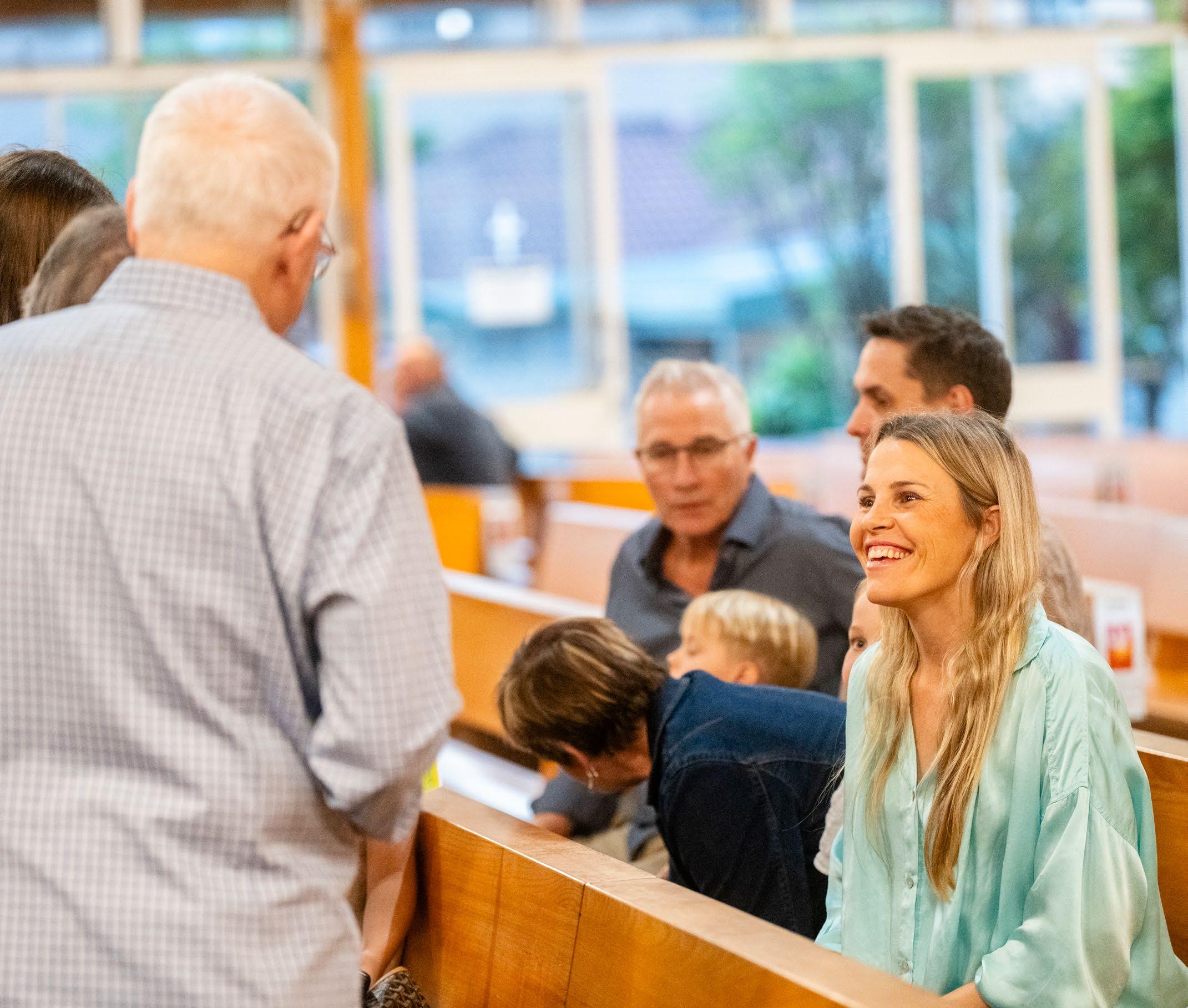
processes of a Renewal project.
As previously mentioned, the Diocesan Review identified several areas as potential sources for action. From these, six key areas were initially selected, leading to the formation of working groups. Each group, composed of both laity and clergy, undertook an extensive research process. They examined the current state of the Diocese, studied Church teaching, explored similar initiatives in other parts of the country and overseas, and engaged with people to ensure their proposals were well-informed.
We are incredibly blessed in this Diocese to have such a wealth of expertise.
The groups include individuals with remarkable credentials—dedicated and accomplished members of both the laity and clergy who willingly share their gifts, talents, and experience for the good of the Church. When I began working for the Diocese in October, one of my key responsibilities was helping these groups finalise their proposals.
Once a proposal reaches a refined stage, the team would typically meet with the Bishop, and sometimes also the Vicar General, Fr Paul McDonald, to present their work, seek feedback, and clarify any outstanding questions. This is an affirming process, recognising the twelve
months of dedication and regular meetings that have gone into each project. Following this presentation, teams make any necessary amendments based on the Bishop’s and Vicar General’s feedback.
The next step is consultation with the Deaneries and the Council of Priests, who hold meetings four times per year. A Deanery is a geographical subdivision of the Diocese, each led by a Vicar Forane (VF). All priests, including retired clergy, generally belong to a Deanery.
by Barry de Silva
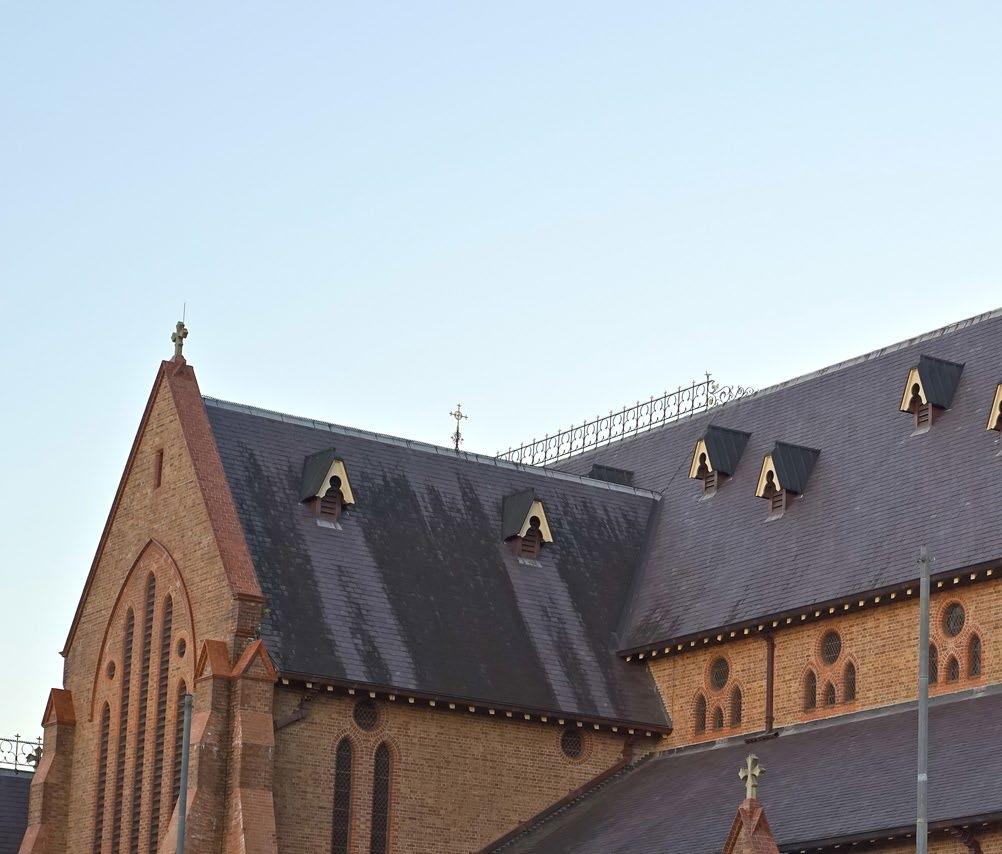
The 2025 Jubilee Year, themed ‘Pilgrims of Hope’, invites Catholics to embark on a spiritual journey of renewal, reconciliation, and hope. The year-long celebration, which is rooted in biblical tradition and Church history, began on 24 December 2024 and concludes on 6 January 2026.
The history of the Jubilee can be traced back to the Old Testament. It is derived from the Hebrew word ‘yobel’ meaning ‘ram’s horn’ and is used to announce the Day
of Atonement (Yom Kippur) and herald the Jubilee Year.
Within the Bible, the Jubilee was observed every 50 years as a time to restore relationships with God, one another, and creation. It involved forgiving debts, returning misappropriated land, and allowing the earth to rest, embodying liberation and renewal (cf. Leviticus 25:8-13).
Reflecting this spirit, the Gospel of Luke recounts Jesus’ proclamation:
“The Spirit of the Lord is upon me... to bring good news to the poor, to proclaim liberty to captives... and to proclaim a
year acceptable to the Lord” (Luke 4:18-19).
The Jubilee Year provides an opportunity for spiritual growth and community building. Bishop Greg Homeming emphasises the significance of this sacred time.
“The Jubilee Year offers us an opportunity to refocus our lives on Christ, mend divisions, and renew our trust in God’s promises,” Bishop Greg said. “It is a time to celebrate the joy of our faith and to shine Christ’s hope into the lives of others.”
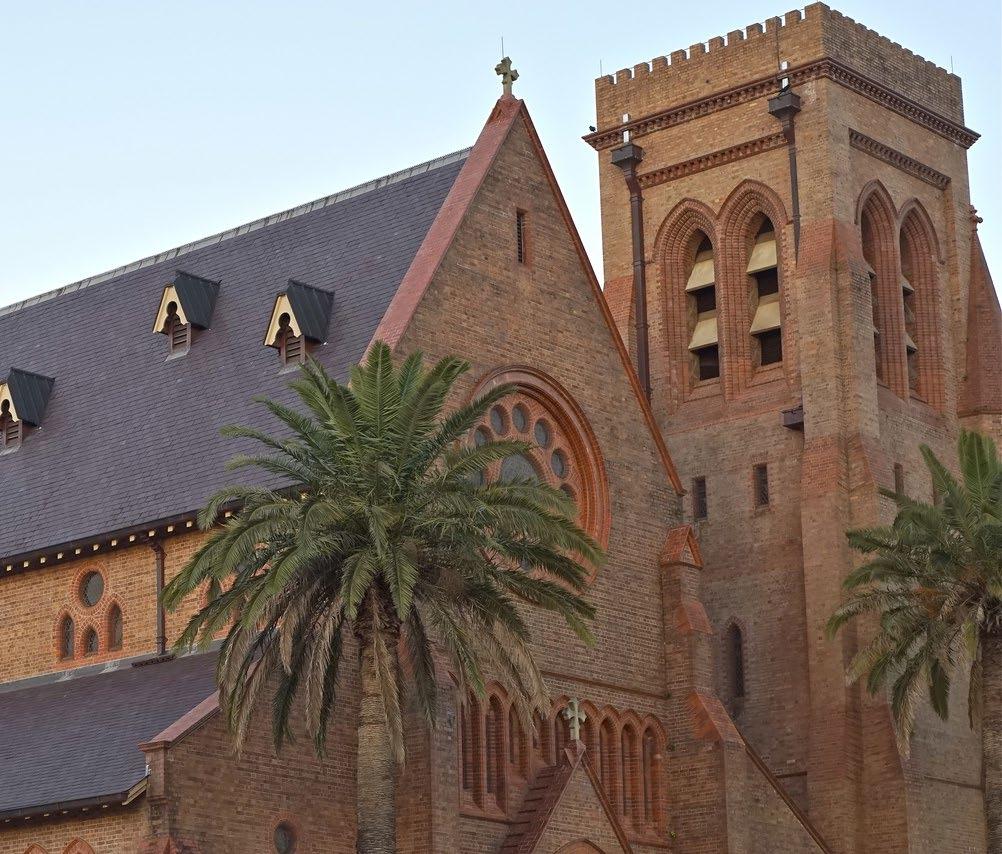
The Church’s Jubilee tradition began in 1300 when Pope Boniface VIII called the first Holy Year. Initially celebrated every 100 years, the frequency changed over time, with ordinary Jubilees now observed every 25 years. Extraordinary Jubilees, such as the 2015 Year of Mercy, mark significant moments in the Church’s history.
The upcoming Jubilee Year includes pilgrimages, the opening of Holy Doors at the four Papal Basilicas in Rome and one in prison, themed
events, and the granting of plenary indulgences.
For the Jubilee, four churches in the Diocese of Lismore — St. Carthage’s Cathedral, Lismore (pictured); Sacred Heart Catholic Church, Murwillumbah; St Augustine’s Catholic Church, Coffs Harbour; and St Agnes’ Catholic Church, Port Macquarie, — have been designated as places of hope. People are encouraged to visit these sites to worship, pray, and deepen their relationship with God.
The good ship ‘Hope’ will also be visiting Catholic schools within the Diocese. The boat is based on the Jubilee logo constructed by students and staff at Newman College in Port Macquarie.
Whether through local pilgrimages or daily acts of kindness, the 2025 Jubilee Year provides everyone, as Pilgrims of Hope, to be united in faith and strengthened by God’s enduring love.
Scan to visit the Jubilee website



‘Never see a need without doing something about it.’
Mary MacKillop
By giving to the Diocese of Lismore, you are helping us continue in our mission of faith, hope, and charity. Donations go directly to the Diocese of Lismore Benevolent Fund to provide support for people who are experiencing hardship and are most vulnerable. Every dollar that is generously donated to the Benevolent Fund will be used for charitable purposes.
The Diocese has a general gift fund you can contribute to. This is to support people that may be experiencing hardship due to factors such as financial strain, unemployment, or crises that disrupt their daily lives. This includes people affected by homelessness, those seeking refuge from domestic violence, and individuals in need of support as they look to rebuild their lives.




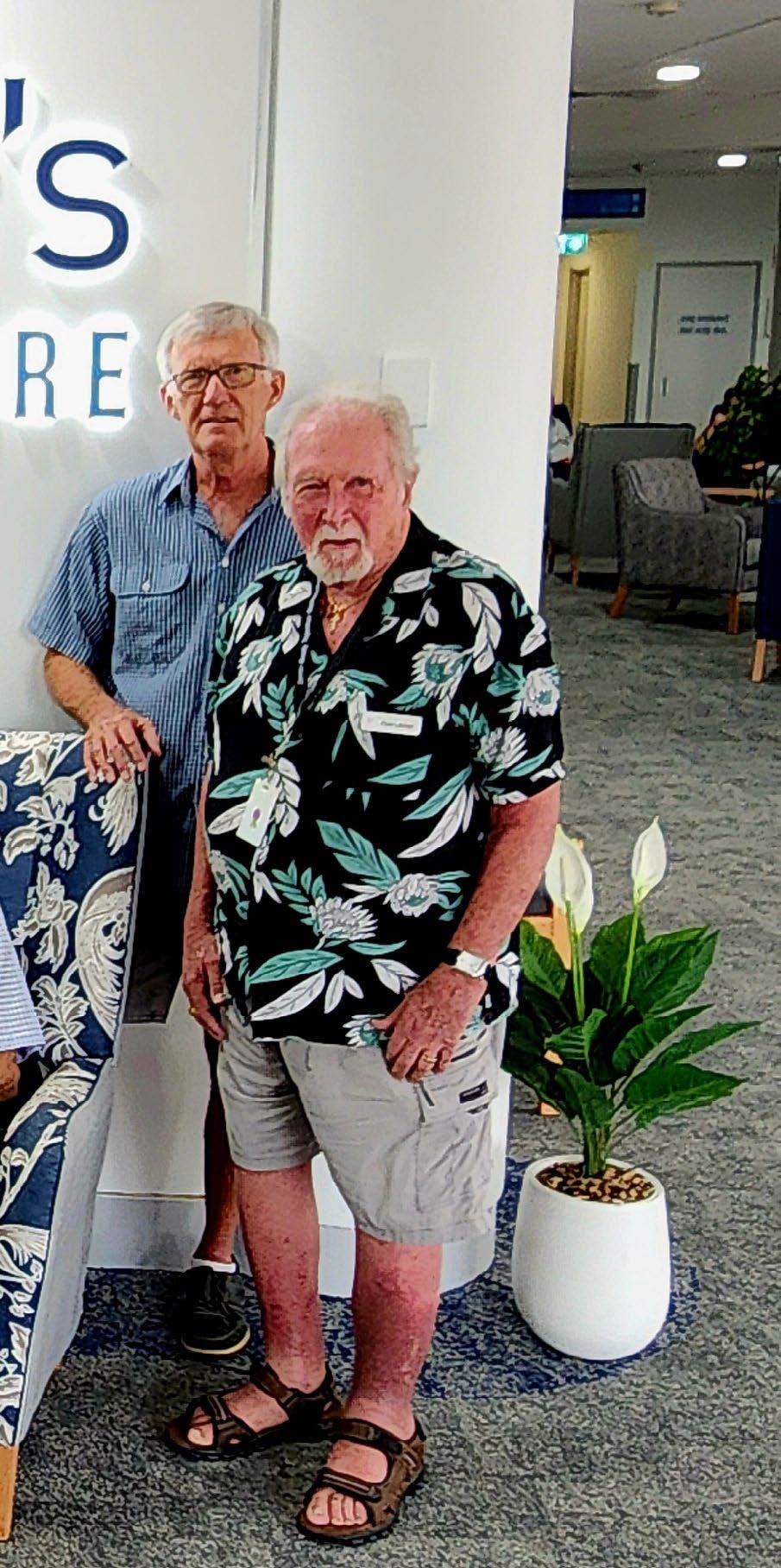
Care Centre. Many may recognise him as the Executive Producer of Bishop Greg’s Online Mass, Australia’s most-watched church service on YouTube. Joe continues a pastoral legacy at St Vincent’s that spans over 100 years.
“St Vincent’s was established by the Sisters of Charity in 1921 at the request of Bishop John Carroll. When they left in 1980 and the Diocese of Lismore took ownership, a team of Presentation Sisters continued pastoral care, later led by Rev Deacon Graeme Davis. Today, the Carmelite Missionary Sisters carry on this tradition,” Joe explains.
“As a layperson, I’m acutely aware of the enormous contribution of clergy and
religious to the heritage of St Vincent’s as we embark on an exciting period of rejuvenation.”
Joe takes a hands-on approach to pastoral care, leading a team of trained volunteer practitioners who offer empathic, non-judgmental listening. Ex-services welfare officers from Alstonville RSL and Lismore RSL also support veterans in the hospital.
Pastoral care at St Vincent’s is grounded in accompanying people on their faith journeys. This includes offering sacramental support, with Masses three times a week and a priest at the hospital daily. An on-call priest is available 24/7 through St Carthage’s Cathedral Parish. Lay practitioners facilitate prayer, Bible studies, and spiritual reflection, providing comfort and counsel.
“The main gift our team brings is intentional presence and accompaniment. No one should feel alone in Catholic care. It often works in quiet moments when people yearn for spiritual connection,” Joe says.
The pastoral team reflects the diverse faith backgrounds of today’s society. To enhance their skills, new recruits have benefited from the Diocese’s educational partnership with the University of Dayton’s Virtual Learning Community for Faith Formation. Ten candidates recently completed a five-week Introduction to Pastoral Care course, which has proven invaluable.
Music has also become a key element of Joe’s ministry. Weekly sessions at Friends
Child Care introduce children to songs and stories of the faith. At St Joseph’s Nursing Home, intergenerational programs with local Catholic schools foster connection and joy. The most profound musical initiative has been the Ballina Threshold Singers’ visits to palliative patients.
“It’s like a big aural hug,” Joe describes. “We sing lullabies to soothe children, but as adults, that never happens. It’s overwhelmingly comforting for patients and families.”
Directors of Mission walk a delicate path—upholding Catholic teachings while engaging workforces that may not practice the faith. This balance was particularly crucial in developing training materials in response to the introduction of Voluntary Assisted Dying in New South Wales.
“It’s something we’re continually fine-tuning,” Joe reflects. “But I take guidance from Mark’s Gospel: ‘Anyone who is not against us is for us’ (Mark 9:40).
We have exceptional people of goodwill working with us. I don’t always know what faith they hold, and that doesn’t matter. Jesus challenges us to build bridges rather than draw boundaries. My role is to recognise and collaborate with all those at St Vincent’s who bring life where there’s despair, healing where there’s brokenness, and relief where there is suffering.”
Find out more about St Vincent’s Lismore
The tomb where Jesus was buried found to be this
The Sunday that marks Jesus’ triumphal entry into Jerusalem
The disciple who denied Jesus three times
The apostle who doubted Jesus’ resurrection
The act of Jesus rising from the dead
The phrase sung in celebration during Easter Mass
The Jewish feast being celebrated during Jesus’ passion
The 40 days of preparation before Easter
The Governor who sentenced Jesus to cruci fi xion
The woman who first discovered the empty tomb
The crown Jesus wore during his passion
The hill where Jesus was crucified
The sacred meal instituted by Holy Thursday
The wooden structure used for crucifixion
The day of Jesus’ resurrection
The garden where Jesus prayed before his arrest
The cloth that covered Jesus’ body in the tomb
The meal Jesus shared with his disciples before his crucifixion
The place of eternal life promised through Jesus’ resurrection
The colour worn by priests on Easter Sunday
